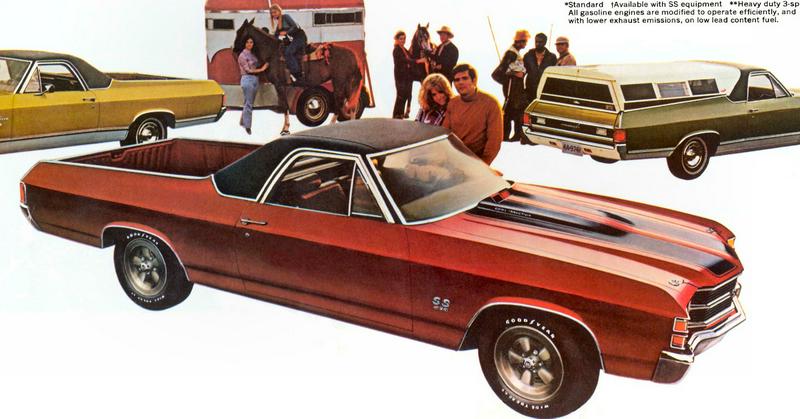Chevy El Camino, The Mullet On Wheels That Became A Cult Classic
By | May 24, 2021

The Chevrolet El Camino combined a pickup truck with a sedan, a feat of automotive design that many in the car-buying population found baffling. Was this innovation, or just indecision? Like many things that were controversial in their day, the El Camino developed a core of loyal fans, and is now cherished by some as a classic.

Cilantro, Neil Diamond, Vegemite, and the El Camino rank as the most polarizing cases in human history. Long before the dawn of the internet, when more than the binary options of love or hate existed, the El Camino split car enthusiasts and the casual observer alike. The first version of the El Camino resembled a truck that mated with an Impala. Chevrolet didn’t invent the car truck mash-up, credit Ford and an Australian pig farmer’s wife for that. But the El Camino became the first ménage à truck to capture the attention of the nation, or at least its derision. This is the evolution of “the most beautiful thing that ever shouldered a load!” at least according to Chevy.

Church & Swine
As the possibly apocryphal story goes, in 1932 an Australian pig farmer’s wife wrote to the Ford factory requesting a vehicle that could arrive in style for Church Sunday but also take the pigs to market on Monday. Nothing can be counted out in reference to 1932 Australia. Anything is possible. Supposedly that letter motivated Ford to make the Ranchero, which became the first truck-car baby in America.
However, whoever wrote that the El Camino could “ride and handle like a convertible, yet hauls and hustles like the workingest thing on wheels” clearly never visited the Outback. Its lack of ground clearance alone would doom the stylishly drunk El Camino in any serious offroading.

Strike One
Like the Hindenburg, the first attempt at the El Camino in 1959, went about as well as the Wright Brothers’ first flight. Chevy introduced it in ‘59 and by ‘60 they discontinued the model as it sold about as well as New Coke. Backing the rear end of a truck onto the Impala front turns out births a really strange looking car. Although, the classy tail fins and the cozy coupe interior undeniably catch the eye.

No, Don’t Call It A Comeback
Four years after the demise of the El Camino, Chevy tried again. This time they took inspiration from the Chevelle, adding a dash of muscle and grit to the new look El Camino. They also offered it in a Super Sport option for those really looking to make some noise. Hot Rod wrote, “El Camino is a true multi-purpose vehicle. Good looks plus sedan styling let it be driven anywhere you’d take a regular passenger car. You never feel out of place – even the ladies should be at ease with it.” Again, no dice. People still weren’t itching to spend their hard-earned money on a car that wasn’t quite a car.

The Heyday
As usual, three times a charm. In ‘68 Chevy went all-in on muscle, juicing the most popular El Camino with 360 to 450 horsepower, depending on the model. As it turns out, Americans wanted power over anything else. Chevy also redesigned the entire body with a big-block Chevelle front clip and Monte Carlo front parking lights. Up until ‘71 the El Camino enjoyed the spotlight amongst the iconic American muscle cars.
Famously, Bill Clinton, David Koresh, and Evel Knievel all drove El Caminos, which probably says it all. Knievel hauled his two Triumph motorcycles in his ‘64 El Camino. Many likened the car to Billy Ray Cyrus' mullet motto, “Business in the front, party in the back.” Dwight Yoakam adoringly referred to his highly modified El Camino as his “trash truck.” Still, some trunk space for that mullet wouldn’t have hurt.
Unfortunately, in ‘71 government restrictions on horsepower and compression took the bite out of the El Camino. Those regulations and Chevy’s identity crisis while trying to revive the “elky” to its former glory slowly killed it.
